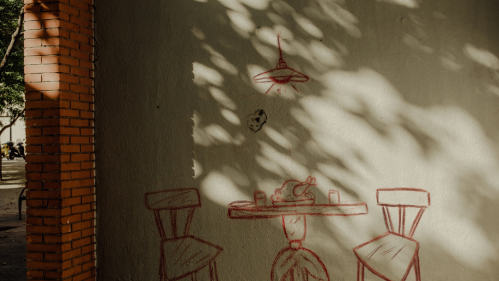
In the past 50 years, scientists have mapped the entire human genome and eradicated smallpox. Here in the United States, infant-mortality rates and deaths from heart disease have fallen by roughly 70 percent, and the average American has gained almost a decade of life. Climate change was recognized as an existential threat. The internet was invented.
On the problem of poverty, though, there has been no real improvement — just a long stasis. As estimated by the federal government’s poverty line, 12.6 percent of the U.S. population was poor in 1970; two decades later, it was 13.5 percent; in 2010, it was 15.1 percent; and in 2019, it was 10.5 percent. To graph the share of Americans living in poverty over the past half-century amounts to drawing a line that resembles gently rolling hills. The line curves slightly up, then slightly down, then back up again over the years, staying steady through Democratic and Republican administrations, rising in recessions and falling in boom years.
What accounts for this lack of progress? It cannot be chalked up to how the poor are counted: Different measures spit out the same embarrassing result. When the government began reporting the Supplemental Poverty Measure in 2011, designed to overcome many of the flaws of the Official Poverty Measure, including not accounting for regional differences in costs of living and government benefits, the United States officially gained three million more poor people. Possible reductions in poverty from counting aid like food stamps and tax benefits were more than offset by recognizing how low-income people were burdened by rising housing and health care costs.
The American poor have access to cheap, mass-produced goods, as every American does. But that doesn’t mean they can access what matters most.
Any fair assessment of poverty must confront the breathtaking march of material progress. But the fact that standards of living have risen across the board doesn’t mean that poverty itself has fallen. Forty years ago, only the rich could afford cellphones. But cellphones have become more affordable over the past few decades, and now most Americans have one, including many poor people. This has led observers like Ron Haskins and Isabel Sawhill, senior fellows at the Brookings Institution, to assert that “access to certain consumer goods,” like TVs, microwave ovens and cellphones, shows that “the poor are not quite so poor after all.”
No, it doesn’t. You can’t eat a cellphone. A cellphone doesn’t grant you stable housing, affordable medical and dental care or adequate child care. In fact, as things like cellphones have become cheaper, the cost of the most necessary of life’s necessities, like health care and rent, has increased. From 2000 to 2022 in the average American city, the cost of fuel and utilities increased by 115 percent. The American poor, living as they do in the center of global capitalism, have access to cheap, mass-produced goods, as every American does. But that doesn’t mean they can access what matters most. As Michael Harrington put it 60 years ago: “It is much easier in the United States to be decently dressed than it is to be decently housed, fed or doctored.”
Why, then, when it comes to poverty reduction, have we had 50 years of nothing? When I first started looking into this depressing state of affairs, I assumed America’s efforts to reduce poverty had stalled because we stopped trying to solve the problem. I bought into the idea, popular among progressives, that the election of President Ronald Reagan (as well as that of Prime Minister Margaret Thatcher in the United Kingdom) marked the ascendancy of market fundamentalism, or “neoliberalism,” a time when governments cut aid to the poor, lowered taxes and slashed regulations. If American poverty persisted, I thought, it was because we had reduced our spending on the poor. But I was wrong.